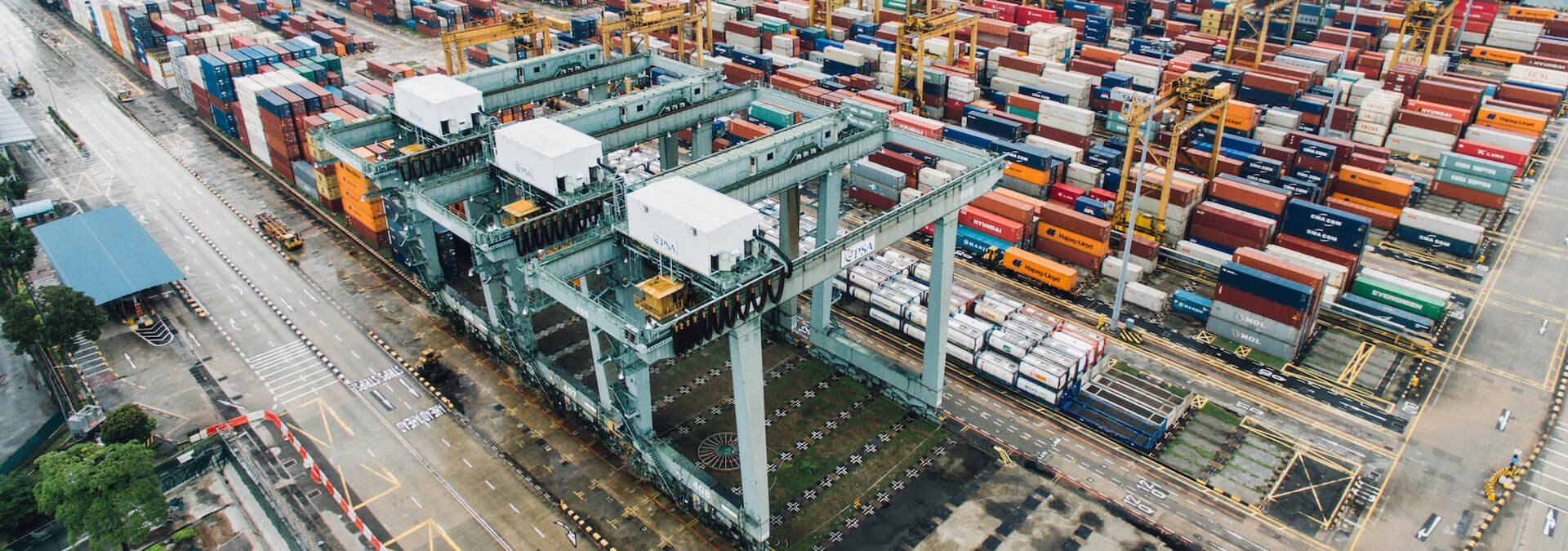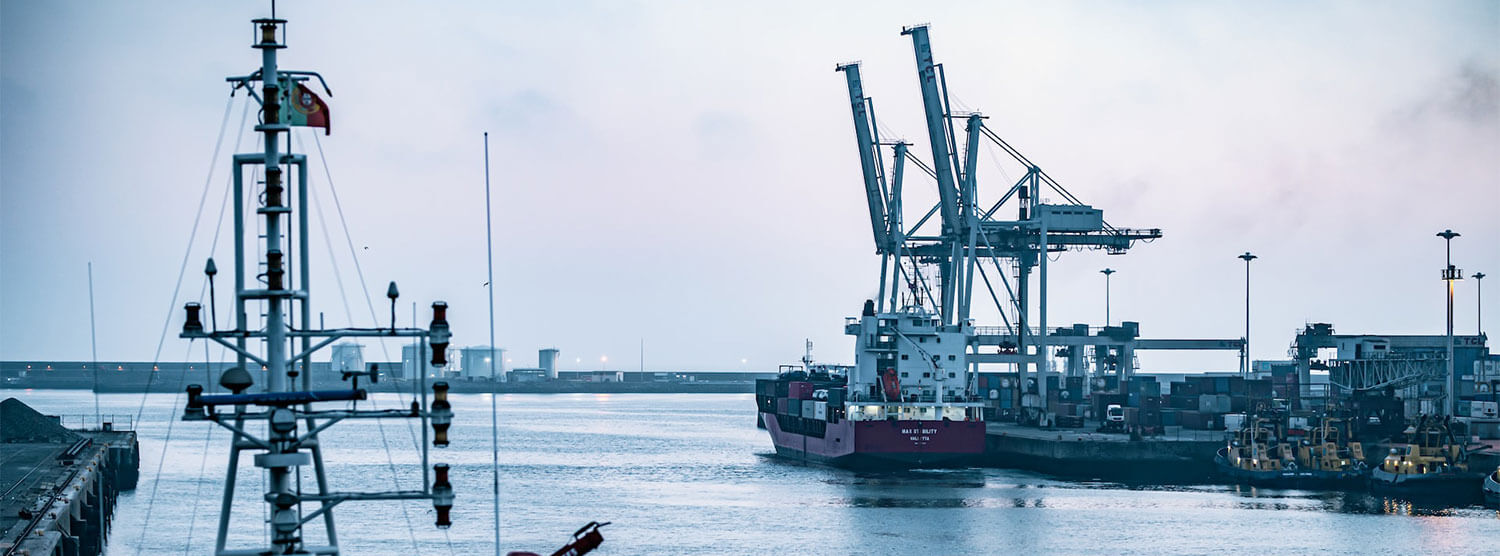The Supply Chain and its current impact
Over the past year, the Supply Chain (SCM) has been seen as on and off in terms of stability for the logistics and transportation sector, where SCM has been impacted by the effects of the pandemic considerably in almost all economic sectors and with long delays and detrimental effects on the supply of goods and services.
In this sense, we have seen a boom in terms of electronic commerce and this has occurred thanks to the great growth in the transport and logistics sector, particularly with the increase in groupage transport and last-mile deliveries.
The growth of electronic commerce that will continue over time, not only in 2022, already implies a strong demand for logistics facilities, making the real estate segment grow with the entry of new “players”.
Regarding the trends that we can see in SCM within companies in the transport and logistics sector, we will continue with a deep implementation of technology applied to logistics, with special emphasis on the management and transmission of intelligent data in real time, the implementation of many more sensors for the Internet of Things (IoT) and the future implementation of the 5G network.
Technological improvements applied to logistics, which will optimize all logistics processes, together with risk management to strengthen the supply chain in terms of safety and reliability, are the trends that the logistics and transport sector must set and focus.
Maritime transport and its impact in 2022
During 2021 it has become a complicated scenario for the logistics and freight transport sector. Supply chain problems continue to be present throughout the world in 2022.
Regarding the tensions in the global supply chain, transport companies will face the challenge of guaranteeing service in a context of disruption: bottlenecks in maritime transport and shortages of raw materials cause delays to accumulate in the flows of goods and in production, forcing us to look for new supply points and alternative movements of goods.
Pressure on supply chains will keep freight prices high, adding to challenges such as the presence of ever-larger vessels.
After a couple of years of severe pressures on global supply chains, the port sector is poised to suffer from new problems that, moreover, could join a series of increasingly globalized problems, in which disruptions in one country will affect others practically more and more frequently.
The year of 2021 has been a very difficult year for the logistics and freight transport sector. Supply chain issues continue to be present around the world.
Persistent tensions in the global supply chain. Transport companies will face the challenge of guaranteeing service in a context of disruption: bottlenecks in maritime transport and shortages of raw materials cause delays in merchandise flows and production to accumulate, forcing to look for new supply points and alternative merchandise movements.
Automation within logistics will be one of the most powerful ways to optimize all processes to the maximum. To do this, companies will bet on the use of technological tools with which to control the execution of operations, improve efficiency in the last mile, guarantee traceability and, of course, carry out digital management of documentation.
Efficiency within the Supply Chain
The supply chain includes all planning and management of purchasing, sourcing, manufacturing, logistics, sales, and marketing, among others. In short, it unifies and controls the main processes and operations of a business. In order to optimize its operation, logistics management will play a key role, since it is responsible for the storage and transport of the merchandise, connecting the points of origin and customers of the products.
Continuous supply chain improvement can involve large-scale operations, but it is almost always small, incremental adjustments in individual departments.
Logistics management tools offer us better visibility and efficiency of the supply chain. By including a tool of this type (usually ERP or similar management systems) we will control all the processes, inventories, supplies and shipments of our chain.
Use good inventory management practices in order to ensure the availability of our products and meet demand. Some of these good practices go through the identification, coding and classification of the inventory and the synchronization of the stocks.
It is important to improve the coordination between suppliers and customers with good purchasing management planning. In this sense, it is important to incorporate metrics and objectives to identify good purchasing management in relation to the results and customer demand.
Good logistics management means better efficiency in the processes of our supply chain and the determinant for the company to be more competitive. Precisely from PanaPark we offer transport and logistics customs warehouse services that help to optimize these processes.
Logistics operators and their impact on SCM
Logistics operators are companies dedicated to providing their own services to the supply chain of the contracting company. When you hire a logistics company to take over part of your operation, you will be able to focus your efforts on your specific area of business.
Among the different types of logistics operators we find the 1PL, 2PL, 3PL, 4PL and 5PL. Its name comes from English: First, Second, etc + Party Logistics, which respond to a logic of the division of activities. The numbers indicate the level of participation granted to suppliers in the logistics and distribution of your process. Here we will tell you more about each of these.
Implementing a supply chain continuous improvement program may seem like a daunting project, but the benefits far outweigh the effort. A few small changes can produce remarkable results.
Continuous improvement involves six different phases that seek to obtain small improvements in processes and products, with the aim of increasing quality and reducing incidents.
Evaluate the current situation, that is, recognize how the supply chain is in order to facilitate the detection of weak points in the processes and to be able to implement improvement strategies.
Identify the main problem. It should point out where the supply chain processes are and the ideal place where they should be. For example, a problem that may arise is that there is a lack of coordination in the summons system to collect loads in a logistics center when no organizational manager and verifier is in place, which leads to the driver not being able to receive the merchandise and getting lost. time and money. In this case, the identification of the problem is clear since you know what the problem is and you know the procedures that must be changed to reform the situation.
The most important part of the continuous improvement process, from a leadership standpoint, is empowering individuals to make decisions and improve inefficiencies for themselves. Creating a culture of continuous improvement within the organization requires commitment, but it is doable, and the results are worth it.
Problems in the Supply Chain (SCM) at an international level
It all starts with COVID-19, as the pandemic has triggered a ripple effect throughout the global supply chain. The Delta variant has continued to cause plant closures in Asia.
Port closures have caused a supply bottleneck awaiting both containers to pack and ships to transport them. This has increased the cost of transporting goods. For example, where it used to cost $3,000 to ship a container from southern China to the west coast of the United States, now it can cost $20,000 or more. This will be reflected in the cost that we must pay as consumers.
It has been highlighted that 90% of the products in the world move by ship and that a large part of them come from China. He pointed out that the infections and restrictions imposed by the pandemic affected the workers in the port terminals, “breaking” the chain numerous times.
According to World Bank estimates, the global economy contracted by 3.59% during 2020 and as a consequence of the restrictions imposed to deal with covid-19. The IMF projected a rebound of 6% for 2021, in a context of slowing growth.
Focus areas that companies should think about to ensure they have the right solutions to address these challenges include:
- Implement risk mitigation strategies. The pandemic has exposed the weaknesses and risks of a global supply chain. When a furniture factory shuts down in Vietnam, or a shipment of toys gets stuck in a closed port, you need to have a “plan B” for your key products or components. By identifying alternative sources of supply and balancing offshore, quasi-offshore and onshore contract suppliers and manufacturers, you can significantly reduce the risk of disruption.
- Incorporate inventory optimization strategies throughout your enterprise network to establish inventory safeguards at strategic decoupling points and buffer against disruptive events.
- Improve visibility into real demand by taking into account leading indicators, such as sentiment analysis of what’s hot on social media. Early signals about actual sales, as well as how and where they are happening, are also needed.
In order to sustain the current business rhythm and guarantee the stability of the sector, it is necessary to respond to the challenges of the present and adapt to the demands that the future is already marking.
Currently, logistics agents around the world hope to solve as soon as possible the problems derived from the covid-19 pandemic that affect supply chains, such as the increase in transport rates, the shortage of containers and the congestion of ports, which should be highlighted among the most serious.
Structure and regulations of Free Zones in Panama
Free zone is a portion of the territory of a country in which there are tax benefits among other non-tax benefits. Among the tax benefits we can mention the exemption from the payment of tariffs on the importation of merchandise, and also the exemption from the payment of some taxes.
Free zones contribute greatly to the economy of the countries, because through their multiple tax, customs, immigration, labor and financial advantages, the incorporation into the world economy through investment is facilitated; promoting technological, economic and social development.
The free zones are of great importance to the economy of the countries, because through their multiple tax advantages, the incorporation into the world economy through investment is facilitated; promoting technological, economic and social development.
Within the free zones you can carry out activities of:
- – Production of goods
- – Logistics services
- – Higher education
- – Scientific investigation
- – Health services
- – General services
Our Structure
The structure of a free zone is based mainly on a strategic location which must be surrounded by excellent access roads and must have a large extension of territory that allows it to grow as operations require it.
- Customs Service and Public Institutions for import and export.
- The structure of its warehouses must be easily modifiable according to the needs of the companies.
- Customs Service and Public Institutions for import and export.
- The structure of its warehouses must be easily modifiable according to the needs of the companies.
- They must have adequate water supply and sanitary drainage systems for all the activities that are going to be carried out there.
- It is necessary that they have electrical distribution networks with high capacities that are able to satisfy the requirements of the companies.
Companies that are installed in a free zone have a series of requirements that must be met in order to operate legally:
- Invest in their activities an amount not less than the capital indicated in the respective application.
- Start the investment, within a period not exceeding one year, counting from its registration in the Official Register of Companies Established in Free Zones.
- Start the activity within a period not exceeding two years, counted from the date of registration in the respective registry, except in cases where the nature of the company’s activity requires a longer period.
- Hire Panamanian workers, with the exception of foreign experts, technicians and trusted personnel that are necessary for the development of the operation.
- Offer Panamanian workers technological training, related to the specialties of their respective production lines and related activities.
- Comply with current regulations or those that are issued in relation to the recovery and protection of the environment, control and elimination of pollution, conservation of green and marine areas, hygiene and safety measures at work and all the provisions that are issued for the protection of flora and fauna.
- Submit annually to the National Commission of Free Zones a statistical report with the following information: jobs, investment made, amount and type of goods or services produced and inputs used and main destination markets.
What advantages does Panapark offer you?
Connectivity
Panapark is located in an unbeatable geographical position. Just 6 kilometers from Tocumen International Airport, one of the main air terminals in Latin America. We are close to many ports both on the Pacific (39 km) and the Atlantic (89 km); as well as banking centers in Panama City.
Location: Av.Panamericana, Corregimiento 24 de Diciembre, Panama
Excellent urbanism
A + industrial infrastructure, wide roads, modern technology in underground electrification and lighting, deep well alternate supplies, electrical backup for common areas. Warehouses tailored to your needs. It has sectional doors with loading docks, fire detection and extinguishing systems. walls 12 meters high. We adapt to your requirements.
Facilities
Customs and other government entities on site for exclusive use, general services, training and training rooms, transportation system for employees, support and personalized advice to adapt your space to your needs.
Security
– Access control
– Private surveillance 24/7
– Monitoring center with 24/7 video surveillance
– Concrete perimeter wall with protection
Make us your strategic ally and we will help boost your business. At Panapark we are interested in you growing because if you grow, we grow with you.
Key trends in freight transport in 2022
The year 2021 was a very complicated year for the logistics and freight transport sector. Supply chain problems continue to be present throughout the world.
Persistence of tensions in the global supply chain. Transport companies will face the challenge of guaranteeing service in a context of disruption: bottlenecks in maritime transport and the scarcity of raw materials cause delays to accumulate in the flow of goods and in production, forcing the search for new supply points and alternative movements of goods.
To manage volatility and prevent supply chains from being broken, the sector will have to evolve towards more flexible models, which allow anticipating and having different alternatives available on a day-to-day basis. And in order to adapt to a changing reality, it will be necessary to have transport providers with dynamic solutions capable of guaranteeing service in the face of variations in demand.
Automation within logistics will be one of the most powerful ways to fully optimize all processes. To do this, companies will bet on the use of technological tools with which to control the execution of operations, improve efficiency in the last mile, guarantee traceability and, of course, carry out digital documentation management.
Consumer consumption habits have changed, consumption has opened up to endless distribution channels, and this creates new operational challenges for the sector, which must ensure availability in each channel. In this sense, there is still a large margin for organizational improvement, and cooperation between suppliers and companies must be strengthened to achieve higher levels of productivity.
Industrial Zones and Free Zones
In Panama there is connectivity with the different markets of the region and the world thanks to its privileged location, it has a unique attraction for foreign investment. There are a variety of industrial parks in the country located at strategic points, taking into account the ease of access to the main industrial and logistics infrastructures.
A Free Zone is a geographical area delimited from the national territory, whose purpose is to promote and develop the process of industrialization of goods and the provision of services destined primarily to foreign markets. Free Zones have tax, foreign trade, credit and exchange benefits.
An Industrial Park (Industrial Zone) is an area planned, designed and reserved for industrial development; they are made with a focus on enhancing the country’s economic environment and working in harmony with urban areas.
These industrial complexes provide the ease of having shared basic services such as water and electricity.
In this sense, free zones always seek to promote industrial development, but with a different mentality, they aim to increase the volume of exports and boost the country’s competitiveness.
Unlike an industrial park, each company that establishes itself in a free zone must be in charge of obtaining the pertinent permits and hiring the water and electricity service.
One of the main advantages provided by the Free Zone Law are the tax incentives it provides to companies established in its customs territory. The main goal of the free zones is to increase the volume of exported products, the plants, factories and centers gathered within their area are focused on that objective.
Both areas are highly attractive for investment and have great profitability over time. However, as an entrepreneur you must be very clear about your approach: you want to grow in the national and international market, an industrial park is for you. If your goal is to increase your export volumes or conquer the foreign market, free zones are your allies.
Industrial parks are configured as spaces for storage and distribution, similar to large shopping centers in cities, but they have industrial-type business purposes.
These areas have specific uses, such as storage, logistics, manufacturing, wholesale and retail trade, workshops, communications, financial intermediation, and real estate, business, and rental activities.
Security within logistics
Security is a concept that can be associated with many perceptions, sensations and feelings, it varies according to the context in which it is used, however, it is natural for everyone to seek some degree of security in what they do every day. Due to this, modern societies have a large number of strategies that seek reliable and adequate security levels to carry out all kinds of actions in a harmonious way.
Security in the transport of goods by companies has become a necessity; Avoiding theft and loss is essential to optimally achieve a logistics process and thus maintain business stability.
In the field of logistics, surveillance and control are the two factors on which security rests, since their impact is measured in higher levels of tranquility and risk mitigation. In this sense, today there are a large number of technological solutions that allow the monitoring of the different activities that are carried out throughout the processes of transformation of raw materials, distribution and commercialization.
Safety is a key aspect in the performance and efficiency of the maritime-logistics-port sector, which together generates more than 200,000 direct and indirect jobs in the country. According to what the general manager of EULEN, Antonio Pérez Díaz, mentions, in this area it is of vital importance that each process that is carried out is in such a way that they are safe. Security creates a climate of trust that makes transfer times and productivity more efficient.
In order for a company to adequately maintain a competitive level, it must provide modern and safe infrastructure, since an unsafe infrastructure can cause irreparable damage and, in this sense, generate delays in operations.
Private security companies have faced great challenges in recent years, as organized crime has developed technologies ranging from access to GPS systems to laser tracking of transport merchandise.
For these reasons, in security matters, it is no longer enough to have strict trust controls for staff, as in the past; professional security companies have had to develop attack prevention technologies in order to provide a comprehensive service that guarantees the distribution process.









